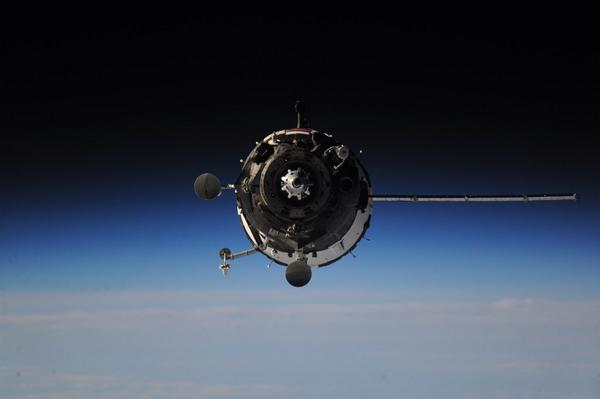Soyuz TMA-14M report
Continuing another exchange of crew at the human outpost in space, this time all eyes will fall on one of the crew members. Understandable of course, for Elena Serova is the first female cosmonaut to be dispatched to the ISS, and the first time a first female cosmonaut reaches the launch pad since Yelena Kondakova in 1997 (ironically on Space Shuttle Atlantis - mission STS-84). She was an engineer working at the Russian aerospace giant RSC Energia and at MCC-M before selected into the cosmonaut corps in 2006.
But let's not focus on her too much here (here's a dedicated thread for this :tiphat and turn to the other 2 in the group. Both should be familiar who have been tracking human spaceflight activities - ex-Navy aviator Barry Wilmore was on the right hand seat of Space Shuttle Atlantis on STS-129 in 2009 and ex-Russian Air Force colonel Alexander Samokutyaev was on the 2011 ISS Expedition 27/28 crew that saw the last 2 shuttle missions to the ISS.
and turn to the other 2 in the group. Both should be familiar who have been tracking human spaceflight activities - ex-Navy aviator Barry Wilmore was on the right hand seat of Space Shuttle Atlantis on STS-129 in 2009 and ex-Russian Air Force colonel Alexander Samokutyaev was on the 2011 ISS Expedition 27/28 crew that saw the last 2 shuttle missions to the ISS.
Safe journeys guys and girls!


Launch location:
Baikonur Launch pad no. 1/5 45°55'12.85"N, 63°20'32.27"E

Launch dates and times:
{colsp=6}Launch times
Time Zone |
{colsp=6}
{colsp=5}Docking times
Time Zone |
{colsp=5}
Live Coverage Of The Launch:
Soyuz TMA-14M (industry id 11F747 #714, NASA id Soyuz 40S) manned spaceship
The crew:
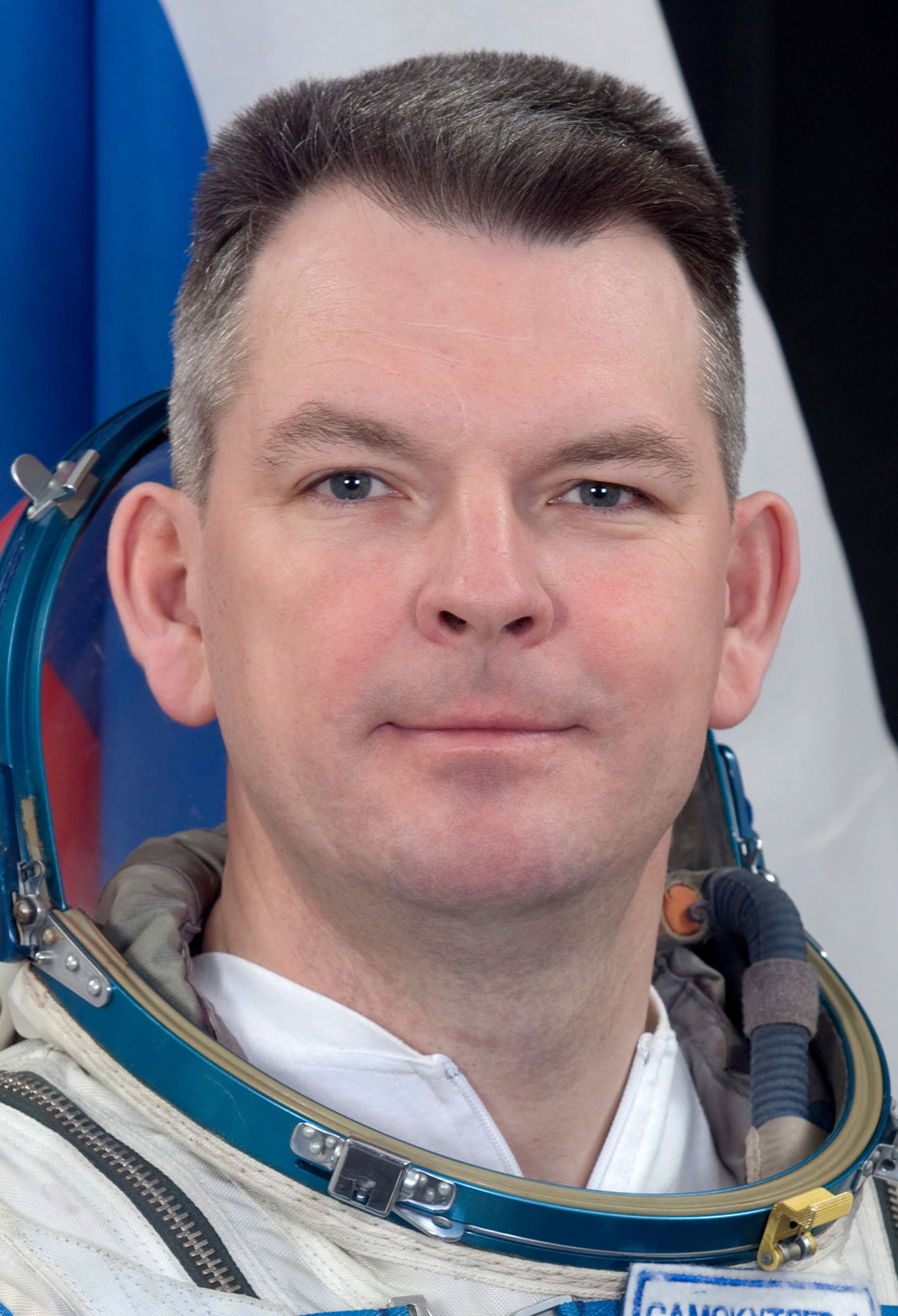 |
|
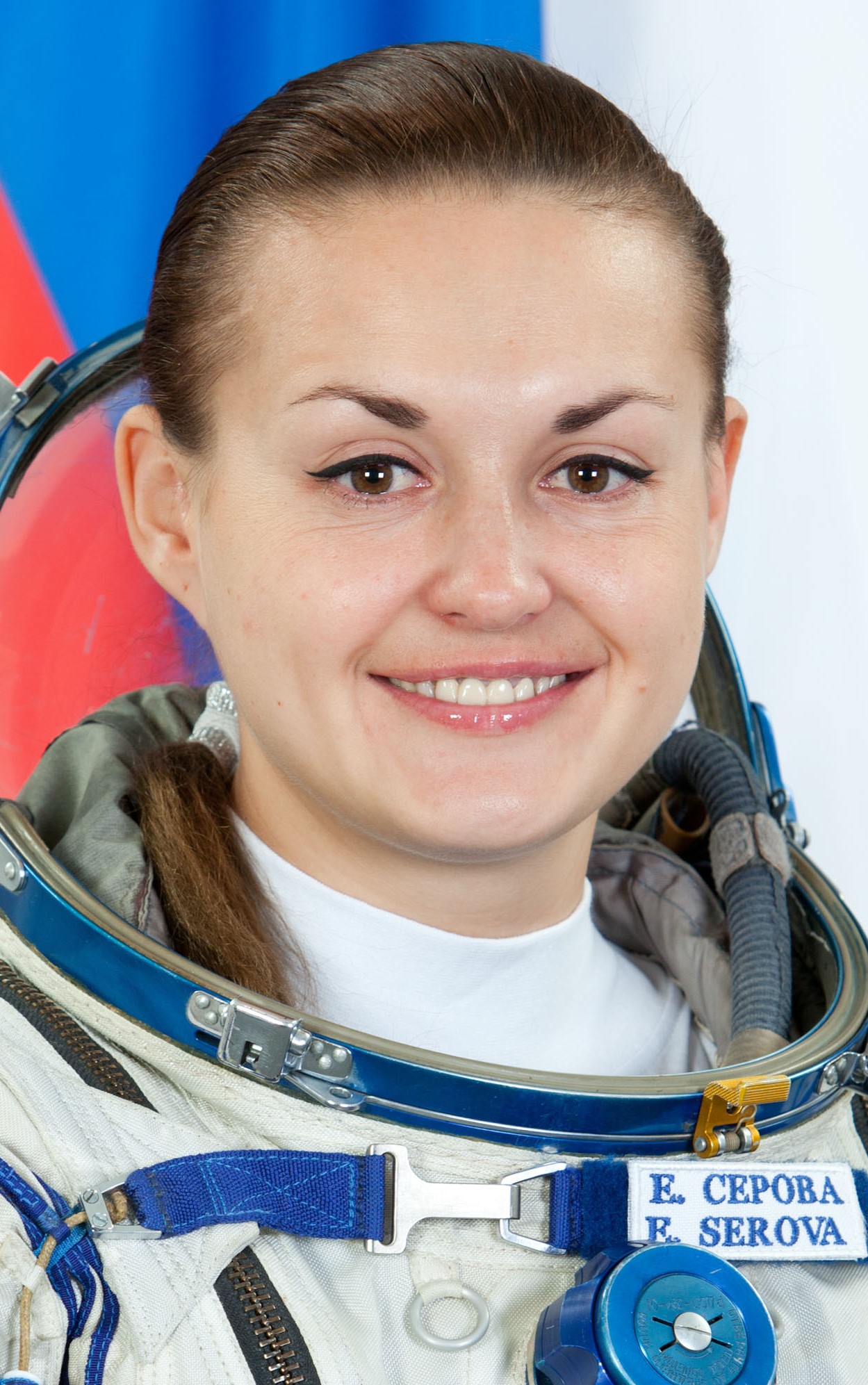 |
|
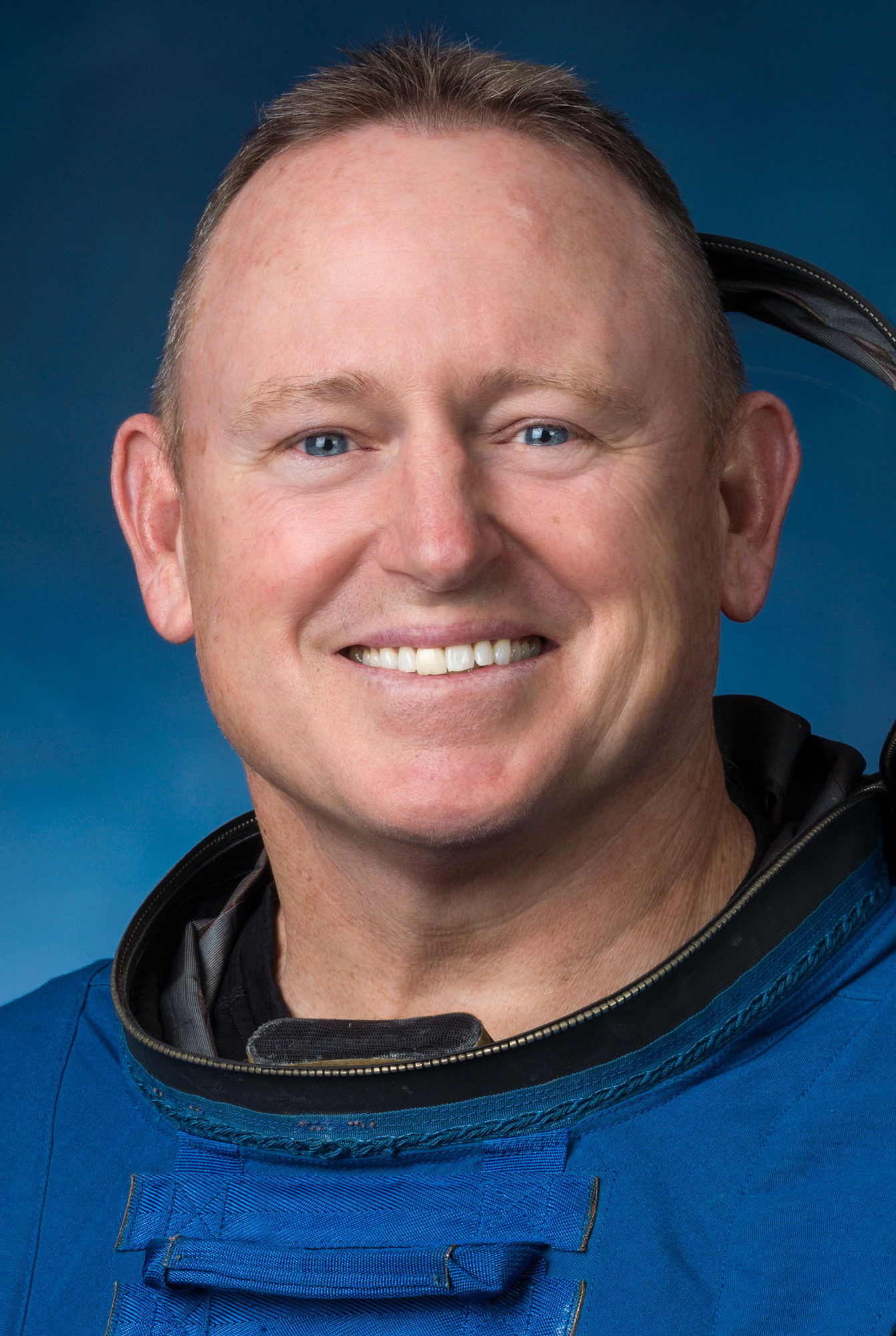 The mission patch:
The mission patch:
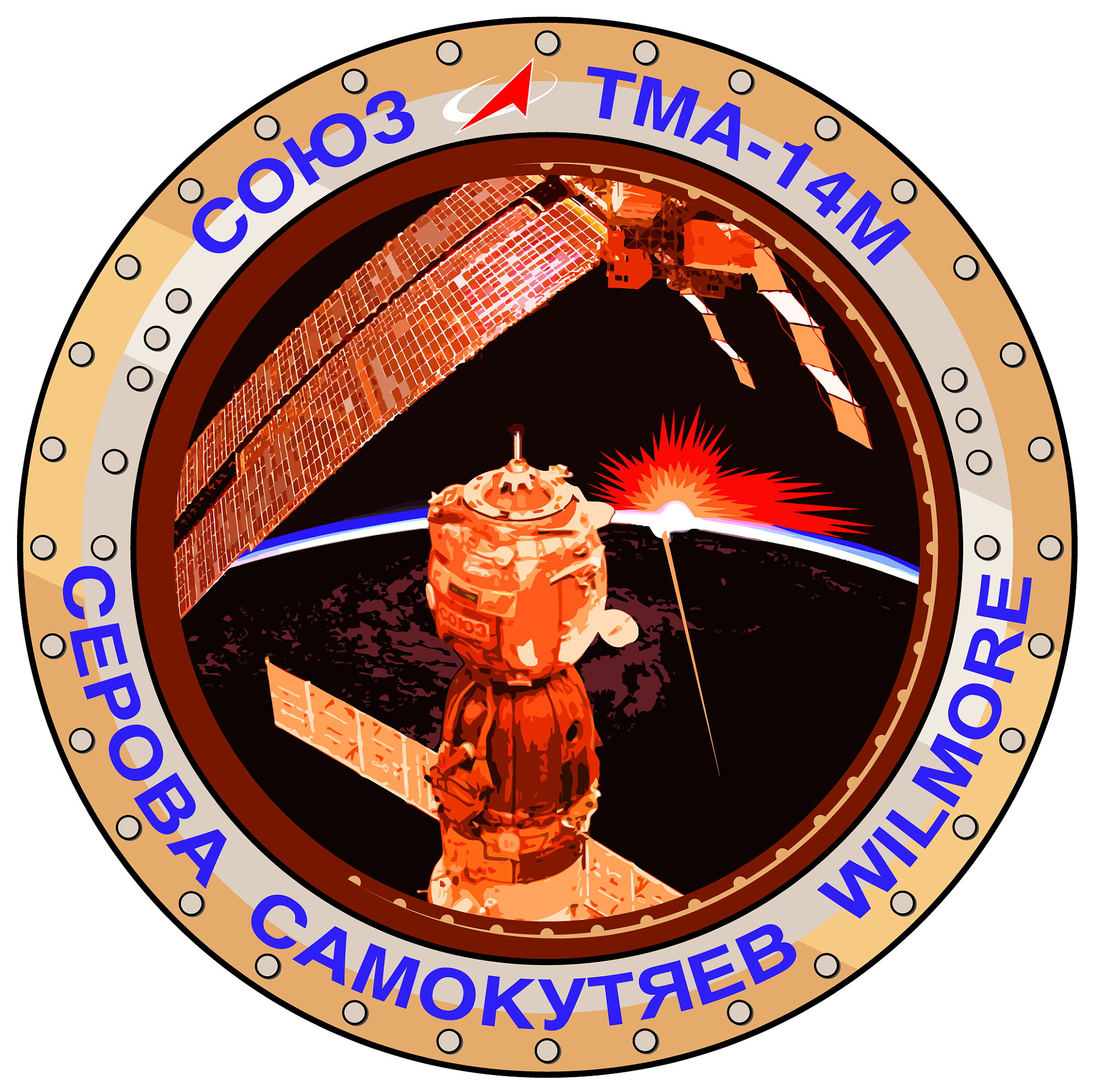
Mission Profile
Ascent Chart:

1. Approach and Docking Chart:

The times below are Moscow Time (UTC+4), commas separate fractional part of numbers:
Expected time of spacecraft separation: 00:33.48.26
2. Orbital Parameters of Soyuz TMA-14M and the ISS
Parameter|Designation|Soyuz TMA-14M at 26/09|ISS at 26/09
Orbital Period|T, min|88.64 +-0.367|92.81
Inclination|i, degrees|51.67 +-0.058|51.64
Min altitude|h, km|200 +7 -22|414.32
Max altitude|H, km|242 +-42|433.72
Phase angle between the space ship and the ISS is about 30.0 degrees.
Projected duration of the space ship staying at the nominal orbit is no less than 20 orbits (~30 hrs).
3. Transfer maneuvers
(six hours short approach scheme applied)
* Nominal two-burn maneuver and two-burn orbit phasing correction
Date|Burn at|Orbit #|Delta V, m/s|Burn duration, s|post-burn T,min|post-burn i,deg|post-burn h,km|post-burn H,km
26.09.14|1:10:16|1|28.16|70.1|89.61|51.64|229.87|295.94
26.09.14|1:54:17|2|18.94|47.2|90.26|51.64|286.46|308.93
26.09.14|2:28:31|2|7.00|18.2|90.51|51.67|286.84|324.45
26.09.14|2:32:15|2|7.00|18.2|90.76|51.64|305.72|333.07
Autonomous approach program is initiated at 4:07:10.
4. Approach at the Close range
Fly-around, station keeping and docking will be initiated at 5:39:32 on September 26, 2014.
5. Docking
Contact and capture is planned on September 26, 2014 at 06:16 +-3 min.
Docking is performed to MRM-2 Poisk +Y docking node
Launch Vehicle:
{colsp=2}Characteristics
 |
|
{colsp=2}
The vehicle's reliability statistics according to http://www.spacelaunchreport.com/log2014.html#rate:
Weather forecast for Baikonur, Kazakhstan on September 26, 2014 (2 a.m.)
A few clouds. Low 13C. Winds W at 15 to 30 km/h.
Time|Temps|Dew Point|Relative Humidity|Precip|Snow|Cloud cover|Pressure|Wind|Weather
2 AM|19°C|7°C|44%|0%|0%|82%|1005 hPa|11 km/h E|
 Overcast
Overcast
References
http://www.mcc.rsa.ru/sojuztma_14m/start.htm
http://www.federalspace.ru
http://tvroscosmos.ru
http://www.tsenki.com
http://www.samspace.ru
http://www.npoenergomash.ru/engines/
http://forum.nasaspaceflight.com
http://www.novosti-kosmonavtiki.ru
http://www.spacelaunchreport.com
http://english.wunderground.com/q/locid:KZXX0055
Continuing another exchange of crew at the human outpost in space, this time all eyes will fall on one of the crew members. Understandable of course, for Elena Serova is the first female cosmonaut to be dispatched to the ISS, and the first time a first female cosmonaut reaches the launch pad since Yelena Kondakova in 1997 (ironically on Space Shuttle Atlantis - mission STS-84). She was an engineer working at the Russian aerospace giant RSC Energia and at MCC-M before selected into the cosmonaut corps in 2006.
But let's not focus on her too much here (here's a dedicated thread for this :tiphat
Safe journeys guys and girls!



Launch location:
Baikonur Launch pad no. 1/5 45°55'12.85"N, 63°20'32.27"E

Launch dates and times:
Time Zone |
Australia - Sydney/AEST (UTC+10)
|
Baikonur / UTC+6
|
Moscow / MSKS (UTC+4)
|
Universal / UTC
|
Washington / EDT (UTC-4)
Launch time (Primary):
|
06:25:00
|
02:25:00
|
00:25:00
|
20:25:00
|
16:25:00
on:
|
Sep. 26, 2014
|
Sep. 26, 2014
|
Sep. 26, 2014
|
Sep. 25, 2014
|
Sep. 25, 2014
Launch time (Backup):
|
05:39:50
|
01:39:50
|
23:39:50
|
19:39:50
|
15:39:50
on:
|
Sep. 28, 2014
|
Sep. 28, 2014
|
Sep. 27, 2014
|
Sep. 27, 2014
|
Sep. 27, 2014
{colsp=6}
[highlight][eventTimer]2014-09-25 20:25:00?before|after;%dd% Days %hh% Hours %mm% Minutes %ss% Seconds %c%[/eventTimer] Soyuz TMA-14M Launch[/highlight]
Time Zone |
Australia - Sydney/AEST (UTC+10)
|
Moscow / MSKS (UTC+4)/
|
Universal / UTC
|
Washington / EDT (UTC-4)
Docking time (Primary):
|
12:16:13 +-3 min
|
06:16:13 +-3 min
|
02:16:13 +-3 min
|
22:16:13 +-3 min
on:
|
Sep. 26, 2014
|
Sep. 26, 2014
|
Sep. 26, 2014
|
Sep. 25, 2014
Docking time (Backup):
|
07:40 +-3 min
|
01:40 +-3 min
|
21:40 +-3 min
|
17:40 +-3 min
on:
|
Sep. 30, 2014
|
Sep. 30, 2014
|
Sep. 29, 2014
|
Sep. 29, 2014
{colsp=5}
[highlight][eventTimer]2014-09-26 02:16:13?before|after;%dd% Days %hh% Hours %mm% Minutes %ss% Seconds %c%[/eventTimer] Soyuz TMA-14M docking to ISS[/highlight]
Live Coverage Of The Launch:
- NASA TV: http://www.nasa.gov/multimedia/nasatv/index.html (coverage starts 3:30 p.m. EDT / 19:30 UTC)
- TSENKI Video Streams: http://www.tsenki.com/broadcast/broadcast/ - coverage starts at 21:25 MSKS (17:25 UTC)
Soyuz TMA-14M (industry id 11F747 #714, NASA id Soyuz 40S) manned spaceship
The crew:



Commander Alexander Samokutyaev, Roscosmos (previous flight experience: Soyuz TMA-21 / ISS Exp. 27/28)
|
Flight Engineer Elena Serova, Roscosmos(previous flight experience: /)
|
Flight Engineer Barry Wilmore, NASA (previous flight experience: STS-129)

Mission Profile
Ascent Chart:

1. Approach and Docking Chart:

The times below are Moscow Time (UTC+4), commas separate fractional part of numbers:
Expected time of spacecraft separation: 00:33.48.26
2. Orbital Parameters of Soyuz TMA-14M and the ISS
Orbital Period|T, min|88.64 +-0.367|92.81
Inclination|i, degrees|51.67 +-0.058|51.64
Min altitude|h, km|200 +7 -22|414.32
Max altitude|H, km|242 +-42|433.72
Projected duration of the space ship staying at the nominal orbit is no less than 20 orbits (~30 hrs).
3. Transfer maneuvers
(six hours short approach scheme applied)
* Nominal two-burn maneuver and two-burn orbit phasing correction
26.09.14|1:10:16|1|28.16|70.1|89.61|51.64|229.87|295.94
26.09.14|1:54:17|2|18.94|47.2|90.26|51.64|286.46|308.93
26.09.14|2:28:31|2|7.00|18.2|90.51|51.67|286.84|324.45
26.09.14|2:32:15|2|7.00|18.2|90.76|51.64|305.72|333.07
4. Approach at the Close range
Fly-around, station keeping and docking will be initiated at 5:39:32 on September 26, 2014.
5. Docking
Contact and capture is planned on September 26, 2014 at 06:16 +-3 min.
Docking is performed to MRM-2 Poisk +Y docking node
Launch Vehicle:

Soyuz-FG
Prime contractor:
|- Samara Space Sentre (Energia Holding enterprise)

GRAU Index:
|- 11A511U-FG
Height:
| 51.1 mDiameter:
| max 10.3 mLiftoff mass:
| 313 metric tonnesPayload mass:
| 6.95 tonnes at ISS orbit from Baikonur1st stage (boosters B, V, G, D):
|- 4 X RD-107A engines
- Propellants (T-1 Kerosene and LOX)
- Thrust/ISP in vacuum - / 316 s
- Thrust/ISP at sea level 79.4 tonnes / 253 s
- Total 1st stage's thrust at sea level: 411.1 tonnes
2nd stage (core A):
|- 1 X RD-108A engine
- Propellants (T-1 Kerosene and LOX)
- Thrust/ISP in vacuum 102 tonnes / 314 s
- Thrust/ISP at sea level 83.5 tonnes / 257 s
3rd stage (block I):
|- 1 X RD-0110 engine
- Propellants (T-1 Kerosene and LOX)
- Thrust/ISP in vacuum 30.38 tonnes / 359 s
The vehicle's reliability statistics according to http://www.spacelaunchreport.com/log2014.html#rate:
Code:
================================================================
Vehicle Successes/Tries Realzd Pred Consc. Last Dates
Rate Rate* Succes Fail
================================================================
Soyuz-FG 38 38 1.00 .97 38 None 2001-Weather forecast for Baikonur, Kazakhstan on September 26, 2014 (2 a.m.)
A few clouds. Low 13C. Winds W at 15 to 30 km/h.
2 AM|19°C|7°C|44%|0%|0%|82%|1005 hPa|11 km/h E|
References
http://www.mcc.rsa.ru/sojuztma_14m/start.htm
http://www.federalspace.ru
http://tvroscosmos.ru
http://www.tsenki.com
http://www.samspace.ru
http://www.npoenergomash.ru/engines/
http://forum.nasaspaceflight.com
http://www.novosti-kosmonavtiki.ru
http://www.spacelaunchreport.com
http://english.wunderground.com/q/locid:KZXX0055


